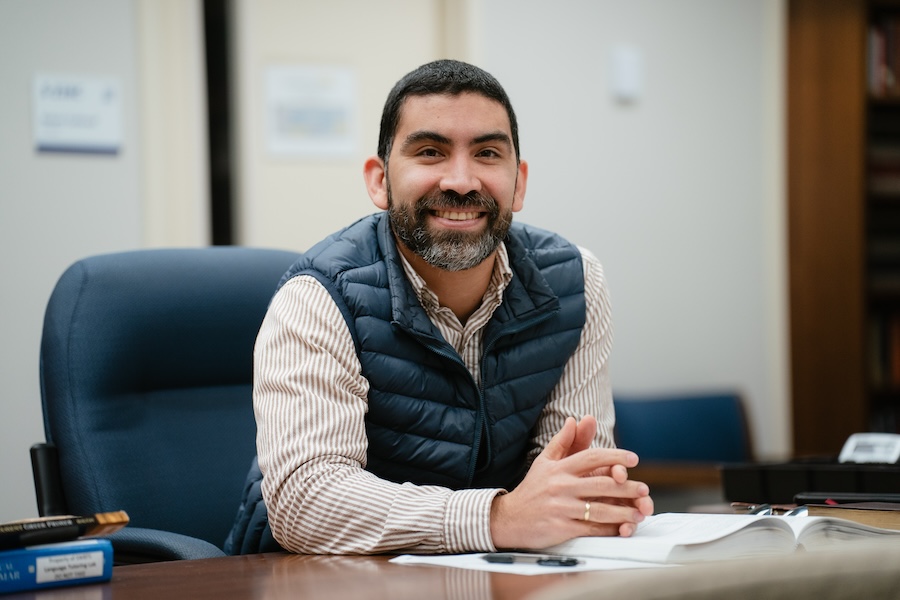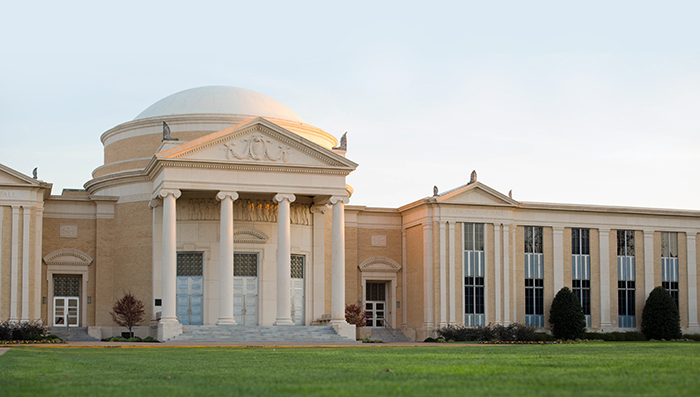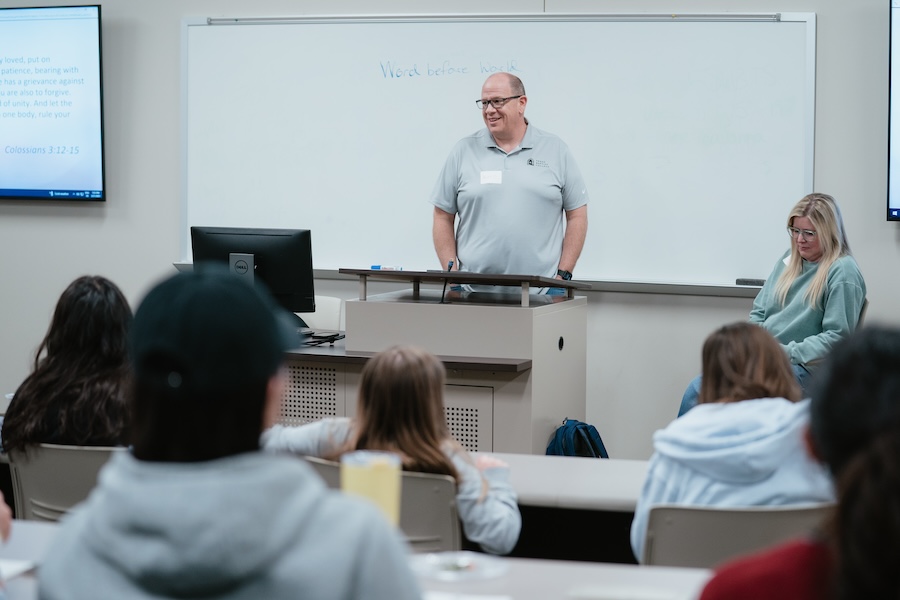SWBTS Legacy: I.E. Reynolds


In 1915, L.R. Scarborough was elected Southwestern Baptist Theological Seminary’s second president, tasked with leading it to greatness in all areas of curriculum. At the annual meeting of the Southern Baptist Convention in Houston that spring, Scarborough met a gifted singer, I.E. Reynolds. Scarborough invited Reynolds to visit the Southwestern Seminary campus in Fort Worth and to sing two solos in a chapel service.
Reynolds’ performances were stirring and impressive, and trustees elected him as Southwestern Seminary’s music director. That fall, they reported to the SBC: “It has been felt by your board for some time that there was needed in the South a strong department in the theological education of Gospel music, so we have elected and put to work Professor I.E. Reynolds, a thoroughly equipped gospel singer.”
It was the first school of church music established by Baptists. Throughout his 30-year tenure, “Ike” Reynolds shaped the school toward its current level of excellence—proving through hard work and devotion to be the right man for a unique, trail-blazing job.
A church musician, teacher, composer, and conductor, Isham Emmanuel Reynolds was born to Winfield and Mary Reynolds in Shades Valley, Ala., on Sept. 27, 1879. He became a Christian at the age of 15 during a revival meeting, and as a youth, he trained diligently for his future calling. He taught himself to play the mandolin and attended singing schools; from his father, he learned the “fa sol la” syllables of the Sacred Harp singing style.
While working in a factory making brushes for cotton gins, Reynolds enrolled in music studies at Mississippi College in Clinton for a year. He began directing music at revival meetings, then enrolled as a student at Moody Bible Institute in Chicago, and then at Chicago Musical College. During this time, he also studied under private tutors in voice, theory, and composition. Reynolds followed this with correspondence courses from Siegel-Myers School of Music in Chicago to earn a Bachelor of Music.
In 1910, the SBC’s Home Mission Board began to employ evangelists and singers to conduct revivals throughout the South. Reynolds was among the first group of 43 musicians who served under that program through 1928.
These experiences were hardly conventional preparation for the director of a seminary music school. But all roads led to his appointment at Southwestern Seminary in 1915. The seminary’s music program began with Reynolds, one piano teacher, and nine students. In later years, Reynolds recalled studying late into the night to stay one day ahead of his students.
Reynolds was re-elected to the faculty for 1916-17, when enrollment grew to 16 music students. By 1919, the school had grown to five faculty members teaching 61 students, and offered a three-year course leading to a Bachelor of Gospel Music. Reynolds carried a near-impossible teaching load—sight reading, elementary and advanced harmony, composition, elementary and advanced conducting, practical church music, music history, history of hymns, tunes and their use, and normal training.
The curriculum attracted devotees, and by 1921, the department, with 15 faculty members and 209 students, became the School of Gospel Music at Southwestern Baptist Theological Seminary. The addition of the Master of Gospel Music degree followed in 1922.
That year, Fort Worth’s first radio station, WBAP, began operation, and Reynolds was eager to utilize this new medium to showcase the seminary. A Feb. 27, 1925, broadcast featured the men’s quartet, the Southwestern Four. Weekly programs by Southwestern Seminary faculty and students followed.
Reynolds also began the beloved annual tradition of a Christmas performance of G.F. Handel’s Messiah at Southwestern Seminary. On Tuesday evening, Dec. 20, 1921, this oratorio was performed by the Choral Club and Orchestra, with Reynolds conducting.
“Years later, students who sang in these performances in the early twenties told of the problems they encountered,” his nephew, William J. Reynolds, later wrote. “At times, it seemed as though the choir would dissolve in confusion. Only Reynolds’ steady, confident beat kept them going.”
The Messiah performances became major events. In 1923, the Choral Club was accompanied by the Fort Worth Little Symphony Orchestra. In 1931, the entire work was first presented—a three-hour performance without intermission. The practice of singing the complete oratorio continued each year through 1943, the last Messiah performance that Reynolds conducted. Over nearly a century, performances have been held at both Southwestern Seminary and Bass Performance Hall, and in November 2018, the School of Church Music delivered its 97th Messiah performance.
The School of Gospel Music initially shared a building with the School of Theology, but with growth, separate quarters were needed. A gift of $150,000 from Mrs. George E. Cowden was designated for a music building honoring her late husband, a Southwestern Seminary trustee. When Scarborough came to Reynolds’ office to report the gift, he asked Reynolds to begin making plans for the building. Reynolds reached into his desk drawer and handed Scarborough the plans he had completed two years earlier—plans for a three-story building with curving staircases. When Cowden Hall was completed in 1926, the newly named School of Sacred Music reflected an expanding curriculum.
Unfortunately, this era of expansion was brought to an end by the Great Depression of the 1930s. Salaries were halved. Half of that was paid in money, and the rest in shares of Rio Grande Valley citrus land that had been a gift to the seminary. After a freeze, however, all the trees died.
When the music faculty was reduced, Reynolds offered his resignation rather than ask one of his teachers to leave. After learning what Reynolds had done, three other faculty members offered to be the one to leave instead. One of these was B.B. McKinney, a popular evangelistic singer. Reluctantly, President Scarborough accepted McKinney’s resignation because, of the four men, he had the greatest prospect of surviving financially. Later, some speculated that Reynolds had fired McKinney, but their enduring friendship disputed this.
Reynolds continued to contribute to the body of church music. He composed two sacred music dramas, four cantatas, and miscellaneous hymns and gospel songs. In 1942, the Southern School of Fine Arts in Houston awarded him an honorary Doctor of Music degree.
In the fall of 1944, Reynolds became ill, suffering from hypertension. The following year, after 30 years as head of the music school, he retired. He made Fort Worth his home until his death on May 10, 1949. At his memorial service on the seminary campus, Cowden Hall brimmed with former students and friends.
With the appointment of Ellis L. Carnett as Reynolds’ successor, a new era of church music dawned. Southern Baptist churches began rising to the challenge of leading congregations in new ways through musical ministry, expanding a trail first blazed by I.E. Reynolds.



